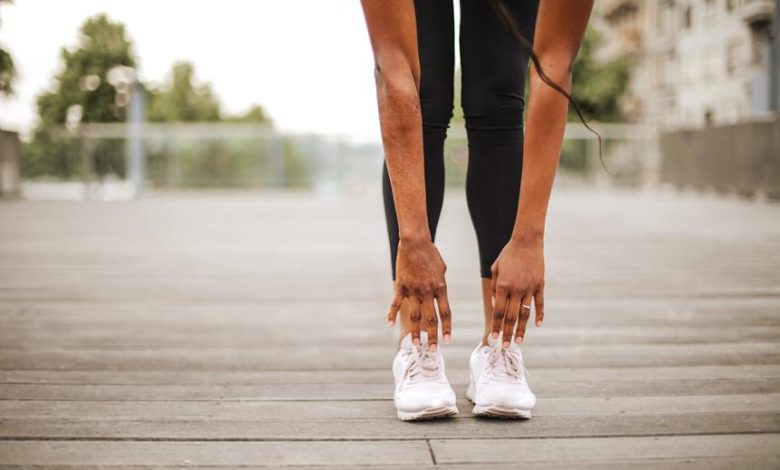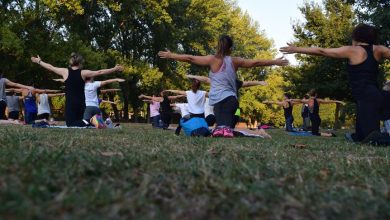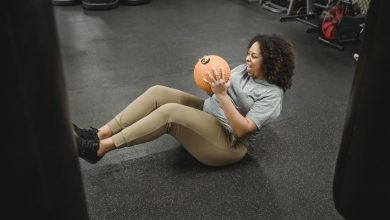Unraveling the Mysteries of Pronation for Optimal Foot Health

Like a compass guiding a traveler through unknown terrain, understanding pronation is crucial for maintaining optimal foot health and enhancing running performance. Pronation, the natural movement of the foot, can either provide a stable foundation or lead to foot problems and hinder running efficiency. By unraveling the mysteries of pronation, this article explores the importance of identifying one's pronation type, correcting any issues, choosing the right shoes, and shedding light on the uncertainties surrounding pronation. Join us on this evidence-based journey towards optimal foot health and running prowess.
Key Takeaways
- Pronation is the movement of the foot where weight is transferred toward the inside edge of the foot, while supination is the opposite movement where weight is transferred toward the outside edge of the foot.
- Excessive pronation or supination can cause problems with foot health and running performance.
- Identifying your pronation type can be done through the Wet Footprint Test, the Wear and Tear Test, or a professional Running Gait Analysis.
- Correcting overpronation or underpronation can be achieved through well-fitting shoes with arch support, shoe inserts, foot strengthening exercises, or in severe cases, custom orthotics, physical therapy, or surgery.
Understanding the Basics of Pronation
What are the fundamental principles behind pronation that contribute to optimal foot health? Understanding the basics of pronation is crucial for maintaining optimal foot health and maximizing athletic performance. However, there are often misconceptions surrounding pronation. Pronation is the natural movement of the foot where weight is transferred toward the inside edge. Contrary to popular belief, pronation is not inherently bad for foot health or athletic performance. In fact, pronation plays a vital role in shock absorption during activities such as running. The key is achieving neutral pronation, where the foot hits the ground with the outside edge first and rotates downward to become flat. Overpronation and underpronation can lead to foot problems and hinder athletic performance. Therefore, it is important to identify one's pronation type through tests such as the wet footprint test or running gait analysis. Correcting pronation issues can be done through well-fitting shoes, inserts, exercises, and in severe cases, custom orthotics or surgery. Choosing the right shoes for pronation issues is also crucial, with achieving neutral pronation being the goal. While there is ongoing debate regarding the role of cushioning and techniques, further research is needed to provide definitive answers on the best approaches to pronation for optimal foot health and athletic performance.
Identifying Your Pronation Type
To determine your pronation type, there are several methods you can utilize, including the wet footprint test, the wear and tear test, and professional gait analysis. The wet footprint test involves stepping onto a surface with wet feet and observing the resulting footprint. A broad or oval footprint with no dry area indicates overpronation, a curved connection between the heel and ball of the foot indicates neutral pronation, and little to no connection between the heel and forefoot indicates underpronation and a high arch. The wear and tear test involves examining the wear patterns on your shoes. Wear on the inside edge of the heel and big toe indicates overpronation, wear on the outside edge of the foot from heel to little toe indicates underpronation, and neutral pronation shows wear in an s-shape, from the outside heel to the big toe. Professional gait analysis provides accurate pronation feedback through slow-motion footage and motion analysis software. This analysis can help identify your pronation type and guide you in selecting appropriate footwear and corrective measures.
| Test | Results for Overpronation | Results for Neutral Pronation | Results for Underpronation |
|---|---|---|---|
| Wet Footprint Test | Broad/oval footprint with no dry area | Curved connection between heel and ball of foot | Little to no connection between heel and forefoot and high arch |
| Wear and Tear Test | Wear on inside edge of heel and big toe | Wear in an s-shape from outside heel to big toe | Wear on outside edge of foot from heel to little toe |
| Gait Analysis | Excessive inward rotation of foot | Balanced rotation and weight distribution | Excessive outward rotation of foot |
Understanding your pronation type is crucial for sports medicine professionals as it has a significant impact on overall foot health and running performance. By identifying whether you overpronate, have a neutral pronation, or underpronate, you can make informed decisions about the appropriate footwear and corrective measures to maintain optimal foot health and prevent injuries.
Correcting Overpronation or Underpronation
Correcting overpronation or underpronation requires a combination of appropriate footwear, corrective measures, and targeted exercises. Pronation correction techniques can help improve foot health and running performance. When it comes to footwear, selecting well-fitting shoes with proper arch support is essential. Shoe inserts, insoles, and kinesiology tape can also be used to correct pronation problems. Additionally, engaging in foot strengthening exercises and incorporating barefoot running into your routine can help correct overpronation. In severe cases, custom orthotics, physical therapy, or surgery may be necessary. It is important to note that the relationship between pronation and running performance is complex, and further research is needed to determine the most effective approaches to pronation correction. Nevertheless, finding the right balance of pronation is crucial for optimal foot health and injury prevention during running.
Choosing the Right Shoes for Pronation Issues
How can one select the appropriate shoes to address pronation issues and promote optimal foot health? Finding the perfect shoe for pronation involves considering several factors. Here are some key factors to consider when choosing the right shoes for pronation issues:
- Arch Support: Look for shoes that provide adequate arch support to help correct overpronation or underpronation.
- Stability Features: Shoes with stability features such as medial posts or firmer midsoles can help control excessive inward rolling of the foot.
- Motion Control: For severe overpronation, shoes with motion control features can provide extra support and stability.
For different pronation types, here are some shoe recommendations:
- Overpronation: Stability or motion control shoes with strong arch support and firm midsoles are recommended.
- Underpronation (supination): Cushioned shoes with flexible midsoles and neutral pronation support are ideal.
- Neutral Pronation: Shoes with moderate arch support and a good balance of cushioning and stability are suitable.
Uncertainty and Controversies Surrounding Pronation
In recent years, there has been growing uncertainty and controversy surrounding the topic of pronation and its impact on foot health. While pronation is widely recognized as an important factor in foot mechanics, there are still several controversies and research gaps that need to be addressed. One of the major controversies is related to the use of motion control footwear in preventing injuries. Studies have shown mixed results, with some suggesting that motion control shoes can reduce injuries while others indicate no significant difference compared to other types of footwear. Additionally, the relationship between foot type, pronation, and injury is complex and not fully understood. Further research is needed to provide definitive answers on the best approaches to pronation and its effects on foot health.
The Future of Pronation Research and Foot Health
Furthermore, there are several key areas that future pronation research should focus on to improve foot health and advance our understanding of this complex biomechanical process:
- The impact of pronation on athletic performance: It is important to delve deeper into how pronation affects various aspects of athletic performance, such as speed, agility, and injury prevention. Understanding the relationship between pronation and performance can help athletes optimize their training and footwear choices.
- The role of genetics in pronation research: Genetics plays a significant role in foot structure and biomechanics. Studying the genetic factors that influence pronation can provide valuable insights into individual variations in pronation patterns and their effects on foot health. This knowledge can inform personalized interventions and treatments for pronation-related issues.
- Long-term effects of pronation correction: Research should focus on assessing the long-term effects of different pronation correction methods, such as shoe inserts, orthotics, and strengthening exercises. Understanding the efficacy and sustainability of these interventions will guide clinicians and individuals in making informed decisions about managing pronation-related conditions.
Frequently Asked Questions
Is Pronation Only Related to Running and Athletic Activities, or Does It Affect Everyday Foot Health as Well?
Pronation is not only related to running and athletic activities but also affects everyday foot health. It has an impact on posture and spinal alignment, as well as joint health and injury prevention. Understanding pronation and its effects is crucial for selecting appropriate footwear and implementing corrective measures. Research suggests that excessive pronation can lead to various foot-related issues, including plantar fasciitis and shin splints. Further investigation is needed to provide definitive answers and guidelines for optimal foot health.
Can Pronation Issues Be Corrected Through Exercises and Strengthening Alone, or Is Orthotic Support Always Necessary?
Pronation issues can be corrected through exercises and strengthening alone, but in certain cases, orthotic support may be necessary for optimal correction. While exercises and strengthening can help improve muscle imbalances and promote proper foot alignment, severe cases of pronation may require additional support from custom orthotics. It is important to consult with a healthcare professional or podiatrist to determine the most appropriate treatment approach based on individual needs and severity of pronation issues.
Are There Any Specific Shoes or Brands That Are Known for Being Particularly Effective in Correcting Pronation Issues?
When it comes to correcting pronation issues, there are specific shoe brands that are known for their effectiveness. These brands include Brooks, ASICS, New Balance, and Saucony, which offer a range of shoes with features such as stability control, motion control, and arch support. Additionally, orthotic support can provide significant benefits in correcting pronation problems. Custom orthotics, prescribed by a podiatrist or orthopedic specialist, can help align the foot and provide the necessary support to achieve neutral pronation.
How Often Should the Wet Footprint Test and Wear and Tear Test Be Repeated to Ensure Accurate Pronation Identification?
Frequency recommendations for the wet footprint test and wear and tear test may vary depending on individual needs. However, it is generally recommended to repeat these tests periodically, especially when there are changes in physical activity or footwear. Accurate pronation identification is beneficial as it helps determine the appropriate corrective measures, such as shoe selection, inserts, or exercises, to address pronation issues and optimize foot health. Regular testing ensures ongoing awareness of pronation type and aids in maintaining proper foot alignment and function.
Are There Any Non-Foot Related Factors That Can Contribute to Pronation Issues, Such as Body Weight or Muscle Imbalances?
Body mechanics and postural alignment play a crucial role in pronation issues, alongside foot-related factors. Factors such as body weight distribution and muscle imbalances can contribute to abnormal pronation patterns. Poor posture, weak core muscles, and tight hip flexors can disrupt the alignment of the lower body, affecting foot mechanics. Addressing these non-foot related factors through exercises and physical therapy can help improve postural alignment and reduce pronation issues. Further research is needed to fully understand the complex relationship between these factors and pronation.



